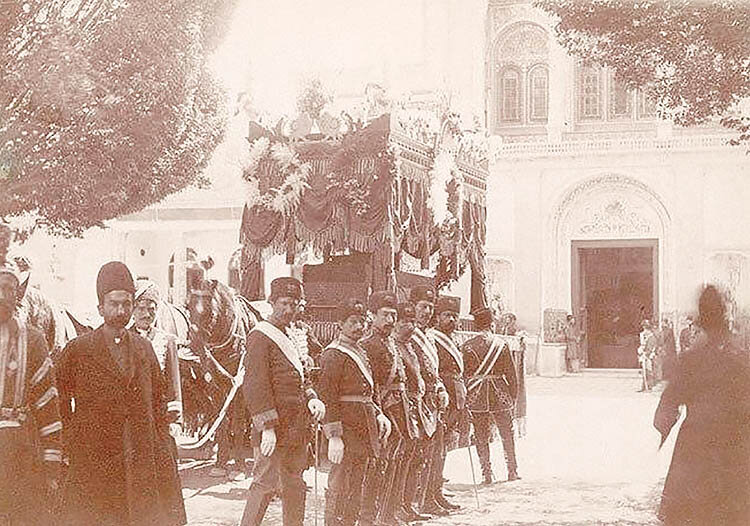Pictures, memorabilia of king’s assassination on view at Tehran show

TEHRAN – A Tehran exhibit has put on show arrays of little-seen black-and-white images, letters, and other 19th-century objects concerning the assassination of Naser al-Din Shah Qajar who reigned from 1848 to 1896.
On Sunday, a host of cultural heritage experts, historians, media personnel, and visitors attended the opening ceremony of the exhibition at the UNESCO-designated Golestan Palace in downtown Tehran.
Moreover, the show also features the king’s tomb inscription as well as furniture and modest medical aids related to the last moments of his life.
Naser al-Din Shah was assassinated by Mirza Reza Kermani, a follower of Jamal al-Din al-Afghani, also known as Seyyed Jamal ad-Din Asadabadi, when he was visiting and praying in the Shah Abdol-Azim Shrine on May 1, 1896.

It is said that the revolver used to assassinate him was old and rusty and had he worn a thicker overcoat or been shot from a longer range, he would have survived the attempt on his life.
Shortly before his death, he is reported to have said, "I will rule you differently if I survive!" The assassin was prosecuted by the defense minister, Nazm ol-Dowleh.
Nasser-al-Din Shah's assassination and the subsequent execution of Mirza Reza Kermani marked a turning point in Iranian political thought that would ultimately lead to the Iranian Constitutional Revolution during his successor Mozzafar-al-Din Shah's turbulent reign.
The fourth Qajar monarch was buried in the Shah Abdol-Azim Shrine, in Ray, southeast Tehran, where he was assassinated. His funeral took place six months after his death.
Sources say, a British diplomat who spoke with some who had been present, Charles Hardinge, commented." the corpse was conveyed on a very high funeral car and was 'high' in more ways than one."
His one-piece marble tombstone, bearing his full effigy, is now kept in the Golestan Palace.
A prime destination for domestic and international travelers, Golestan Palace is located in the heart and historic core of Tehran. The palace complex is one of the oldest in the Iranian capital, originally built during the Safavid dynasty (1501–1736) in the historic walled city.

Following extensions and additions, it received its most characteristic features in the 19th century, when the palace complex was selected as the royal residence and seat of power by the Qajar ruling family (1789-1925). At present, the Golestan Palace complex consists of eight key palace structures mostly used as museums and the eponymous gardens, a green shared center of the complex, surrounded by an outer wall with gates.
According to the UN cultural body, Golestan Palace exemplifies architectural and artistic achievements of the Qajar era, including the introduction of European motifs and styles into Persian arts.
AFM
